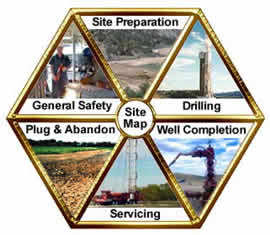Please note: As of 01/20/2025, information in some news releases may be out of date or not reflect current policies.
News Release
US Department of Labor's OSHA launches focused enforcement program to prevent injuries and fatalities in North Dakota's high-hazard industries
BISMARCK, N.D. — Since January 2012, 34 North Dakota workers in the oil and gas and construction industries have died because of work-related injuries. During that period, their deaths accounted for 87 percent of all North Dakota fatalities investigated by the U.S. Department of Labor's Occupational Health and Safety Administration. OSHA launched an enforcement emphasis program this month to address continued concerns about worker safety in these North Dakota industries that temporarily brings in additional investigators from throughout the United States to increase OSHA's field presence in North Dakota.
 |
"These industries are inherently dangerous, and workers are exposed to multiple hazards every day. Their safety must not be compromised because demand for production keeps increasing," said Eric Brooks, OSHA's area director in Bismarck. "Workers are coming to these growing industries to find jobs, not catastrophic injury and preventable death. These employers have a legal responsibility to protect every employee that works for them."
Of the 34 fatalities since 2012, 21 workers died while working on and servicing drilling rigs or conducting production support operations in the oil and gas industry. Workers are exposed daily to serious hazards, such as fires, explosions and equipment-related dangers. Additionally, 13 construction workers have died because of falls, struck-by hazards and trench cave-ins. Fall hazards in construction remain the leading cause of death in the industry, with hundreds of lives lost nationally each year.
OSHA has had a local emphasis program for the oil and gas industry for the last three years, which outlines hazards and allows for increased enforcement. The enforcement program includes chemical sampling of fracking and tank gauging operations to test for atmospheric hazards, violations found in recent inspections. In addition, OSHA's Oil and Gas Well Drilling eTool identifies common hazards and possible solutions to reduce incidents that could lead to injuries or fatalities.
OSHA has also participated in outreach events with oil and gas employers, including a multistate stand-down with the Montana-North Dakota chapter of the National Service, Transmission, Exploration and Production Safety Network in which more than 160 employers and 1,000 workers voluntarily ceased operations for one day to discuss hazards and effective means to address them.
"Since we started the original emphasis program, we have seen improvement in North Dakota's oil fields, and the fatality rate has decreased. But no death is ever acceptable, and these industries are still hazardous for North Dakota's workers," Brooks said. "OSHA will continue to use its full enforcement authority — along with these new outreach efforts — to achieve the goal of every worker going home safely each day to their loved ones."
Under the Occupational Safety and Health Act of 1970, employers are responsible for providing safe and healthful workplaces for their employees. OSHA's role is to ensure these conditions for America's working men and women by setting and enforcing standards, and providing training, education and assistance. For more information, visit http://www.osha.gov.
